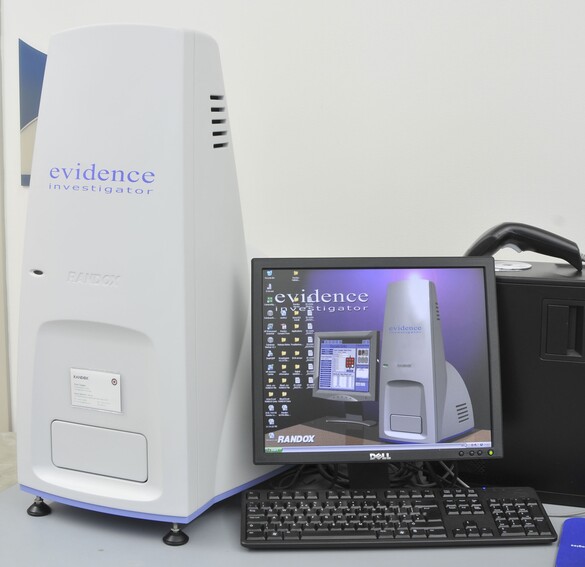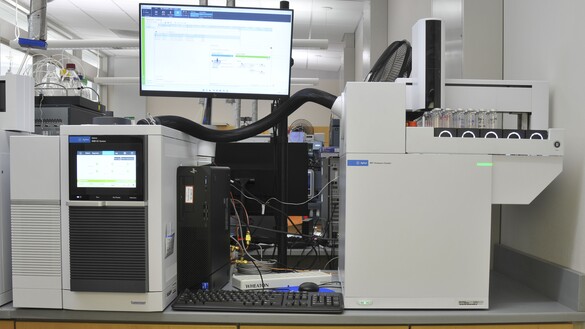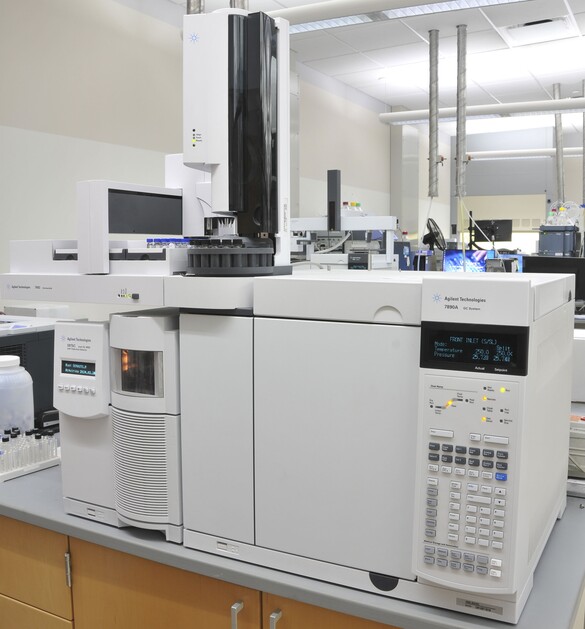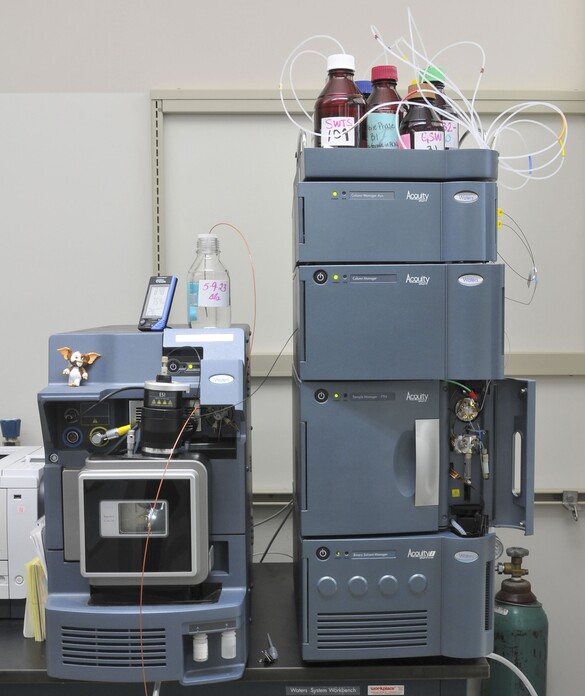On this page...
Randox

Randox is a screening instrument that allows for comprehensive and sensitive screening for multiple compounds in a single assay. Randox employs bio-chip technology which works based on ELISA principles (competitive antibody-antigen binding). If drugs are present they will compete with labeled antigens for a limited number of antibody sites. A Chemiluminescent reaction is then used to produce a measurable signal determining if certain drugs/drug classes are present. Randox provides a preliminary screening result, positive results will be followed up with a more specific confirmation test.
Back to top
Gas Chromatograph (GC)

The Gas Chromatograph is an instrument that uses the principles associated with distillations and compound polarities to separate components in a sample mixture. Components separate by adhering to the stationary phase at different locations on the column with the aid of the gas mobile phase. Components are then eluted out of the column at different times, and detected by flame ionization. This instrument is used mostly for determination of alcohol concentrations in blood and urine.
Back to top
Gas Chromatograph-Mass Spectrometer (GC-MS)

This instrument couples the abilities of a gas chromatograph with the mass spectrum of compounds to provide identification of compounds in a sample. Most compounds can be detected using this instrument, but it might be necessary for an extra derivatization step to make sure the compound is volatile in the gas chromatograph.
Back to top
Liquid Chromatograph Tandem Mass Spectrometer (LC-MS/MS)

The Liquid Chromatograph Tandem Mass Spectrometer (LC-MS/MS) operates in a similar manner to the GC-MS with a few exceptions. Instead of using a gas mobile phase, the chromatograph uses a liquid mobile phase and the tandem mass spectrometers provide a greater sensitivity to trace amounts of compound. Like GC-MS, the LC-MS/MS is used to confirm the presence of the drugs that were found in the initial screening process. The liquid chromatograph tandem mass spectrometer has the advantage of the ability to look at a wider range of organic compounds in a sample, does not need the extra derivatization step and generally has improved sensitivity over a GC-MS.
Back to top
Liquid Chromatograph Quadrupole Time-of-Flight (LC-qTOF)

LC-qTOF, also known as liquid chromatography-quadrupole time-of-flight, is an advanced analytical technique used in various scientific fields such as chemistry, pharmaceuticals, and environmental science.
In simple terms, LC-qTOF helps scientists analyze and identify the chemical makeup of different substances. It combines two key processes: liquid chromatography, which separates the components of a mixture, and quadrupole time-of-flight mass spectrometry, which measures the mass and charge of those components.
LC-qTOF is also known for its high-resolution mass accuracy. High-resolution mass accuracy refers to the precision with which the mass of a compound is determined. It is a critical feature of LC-qTOF that allows scientists to obtain precise and accurate molecular weight measurements of the components in a sample. The advantage of high-resolution mass accuracy is that it enables scientists to differentiate between compounds with similar mass values but different molecular compositions enabling them to confidently identify drugs and other chemicals in complex biological samples.
Back to top